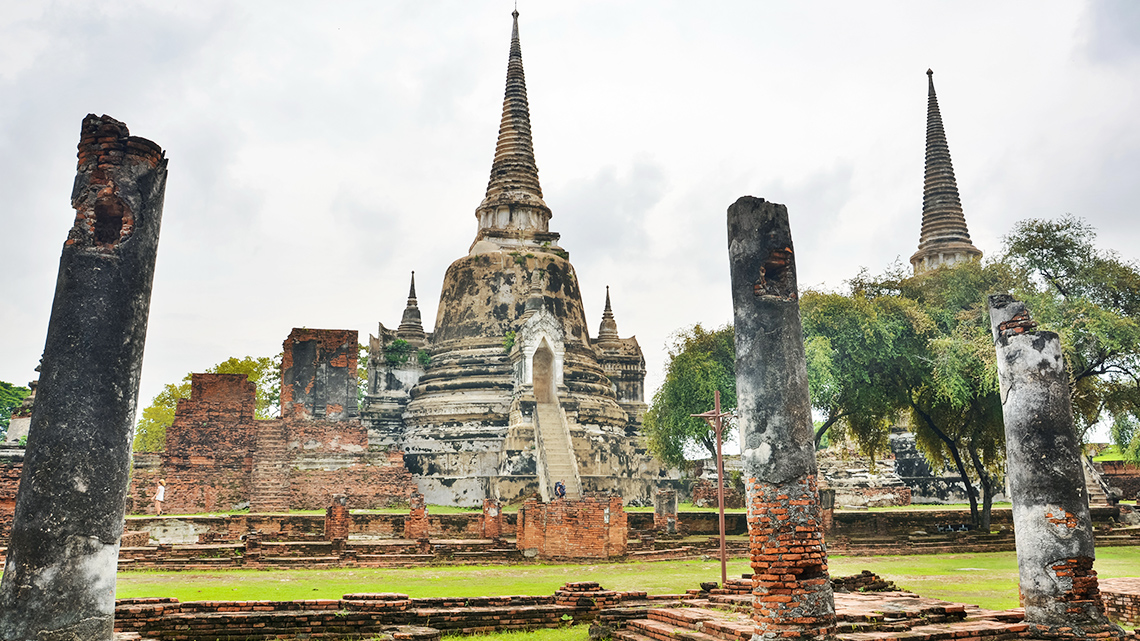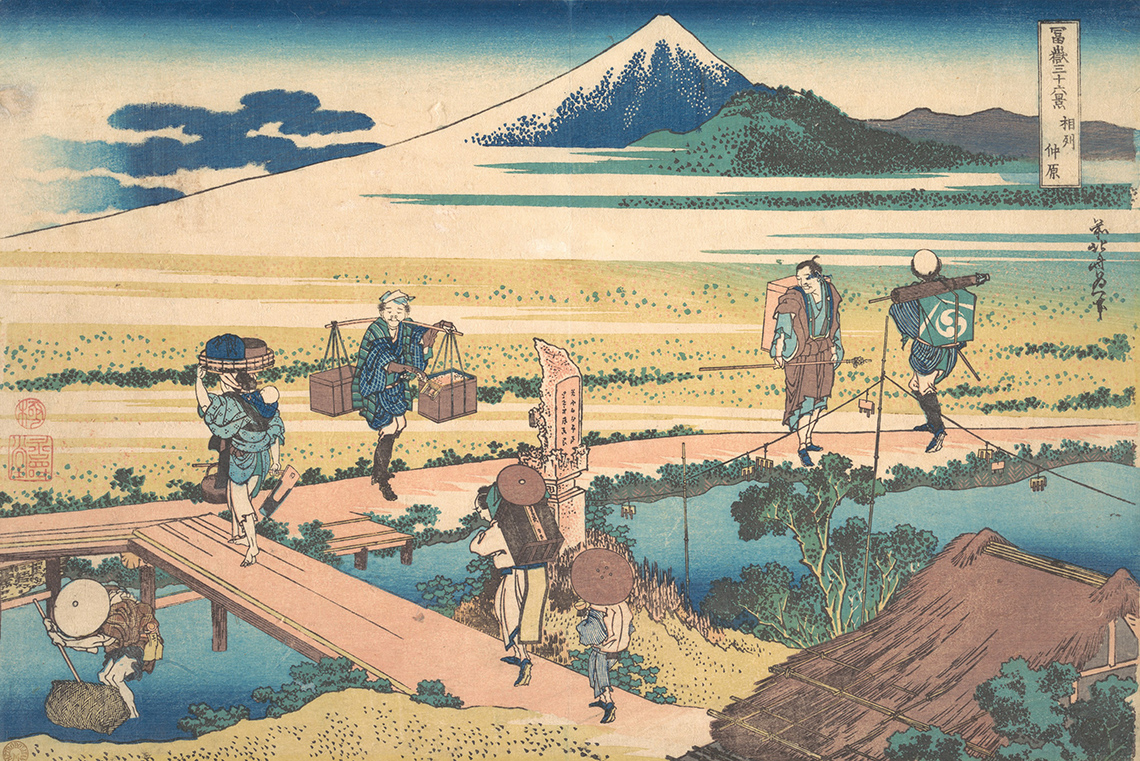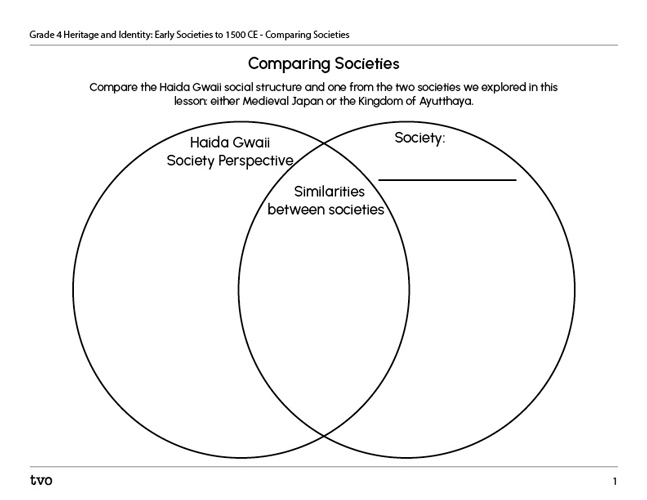Minds On
Explore the clues
Consider the following images and descriptions of early societies:
- What clues about the society are given?
- What roles or jobs do the individuals in the images and descriptions appear to have in their society? How do you know?
Record your ideas in a notebook or a method of your choice.
Action
Social structures

In the past, societies around the world have arranged themselves differently.
Some societies had a ruler, king, queen, or an emperor.
Other societies moved from one location to another and had no need for a central leader. In these societies, the head of their family was the most important leader.
Within every society, there are social organization structures that determine the relationships between the people. The people in the society sometimes fit into different levels in a hierarchy, which can be called classes.
Student Tips
Did you know?
A hierarchy is a system in which people are ranked according to their status and authority in relation to one another.
To help understand the social organization structures in some of these societies, let’s explore a few of the titles.
For each 'title,' select the corresponding description.
For each 'title,' select the corresponding description.
For each 'title,' select the corresponding description.
Press 'Let’s check!' to access the rank and description for each title.
- Emperor: a supreme leader.
- Elder: a person of age and traditional knowledge who teaches future generations.
- King/queen: the ruler of a Kingdom that makes decisions and helps to take care of the people in the Kingdom.
- Political leaders: a group of people active in politics, usually working closely with and sometimes representing the leader of their community.
- Nobles: the group of people with high standing and sometimes royal connections with the leader.
- Governors: representatives of the state or leader.
- Warriors: soldiers or fighters.
- Spiritual leaders: members of society who could communicate with the spirit world or advise the community in the ways of their spiritual beliefs.
- Soldiers: a person who serves in the army.
- Crafts people/artisans: a person highly skilled in a craft.
- Merchants: a person involved in trade.
- Peasants: farmers who may rent land from landowners to grow crops.
Medieval Japan

Japanese societies have existed for thousands of years and continue to exist today.
Let’s explore the hierarchy of Medieval Japanese societies.
Medieval refers to the time period also called the “Middle Ages.” It lasted from 600 AD to 1500 AD.
Check out the following hierarchy chart:

This is the feudal hierarchy in Medieval Japan. This is diagram of the social organization that structured medieval Japanese society. This social structure takes the form of an upright triangle. At the very top is the Emperor, followed by political leader, Shogun, the nobles,Diamyos, and the Samurai and the Ronin (soldiers) – who all formed the warrior class. Under them were the peasants or farmers, artisans, and lastly, the merchants.
Notice that the emperor was at the top of the social hierarchy in medieval Japan.
Japan had a feudal system. This means that in exchange for their labour and some of their food supplies, farmers or peasants were offered military protection by the Emperor and political leaders.
Press 'Feudal Systems' to access more details.
Political leaders, nobles, and warriors known as Samurai belonged to the warrior class.
Farmers and fishermen formed the commoner or peasant class. The artisan class made crafts, and below them was the merchant class, who sold items.
All people were deeply affected by their class.
Learning check!
Select the correct answer, then press “Check Answer” to see how you did.
Kingdom of Ayutthaya

The Kingdom of Ayutthaya was founded in the fourteenth century and developed until the eighteenth century.
Ayutthaya was connected through trade with Japan, China, the Middle East, and Europe.
Society was based on a hierarchy, placing the king at the top as an absolute monarch, or someone who held supreme authority.
This position was based on the Buddhist belief that the king was a perfect ruler who followed the teachings of Buddha for his people.
Below the king were the nobles, court officials, military leaders, and governors. They received rice fields as payment for their services.
Similar to Medieval Japanese society, the peasant class was formed by farmers. They grew crops on the lands (mainly rice) and answered to their headman or village leader. In exchange for protection from foreign military forces, villages and smaller kingdoms were expected to pay tribute to the king.
The Sangha were the Buddhist monks who formed their own order that was respected by the king’s court.
Student Tips
Did you know?
Tribute is a regular payment made to the king by villagers and/or smaller kingdoms.
Payments could be in coins (or cowrie shells), food, and men for armies during times of war.

Ruins of ancient Kingdom of Ayutthaya in modern-day Thailand.
Check out this artifact, a drawing of the Kingdom of Ayutthaya:

This is a map of Ayutthaya drawn by Johannes Vingboons in 1665. It shows the city with buildings and Buddhist temples divided by a number of waterways.
Learning check!
Select the correct answer, then press 'Check Answer' to see how you did.
Which ancient society?
Reflect on the information that you learned about in this learning activity to complete the following activity:
For each sentence, select the missing 'ancient society' from the drop-down menu.
Test Your Skills!
What do you think?
Reflect and respond to the following questions:

- What are some similarities between Medieval Japan and the Kingdom of Ayutthaya?
- What is unique about these societies?
Record your ideas in a notebook or a method of your choice.
Press 'Hint' to access additional prompts to help guide your thinking.
For example:
- Did each society have warriors?
- How were the leaders of each society different?
Consolidation
Analyze a society
We have learned about two distinct early societies with different social organization structures.
All societies are structured with some form of social organization.
Let’s consider the social organization structure of one more early society in Canada and the role of members of the Haida Gwaii First Nations in British Columbia.
Haida Gwaii
The society of the Haida Gwaii has existed for thousands of years and continues to exist today.
This map shows the islands where the Haida Gwaii Nation lives. The islands are off the coast of British Columbia, north of Vancouver Island, but south of Alaska.
As we work towards Truth and Reconciliation, information about lands and territories is constantly being updated. This map was created using information available as of July 2021 from Indigenous Canada Travel.

Haida Gwaii society members fell into one of two social groups – the Eagle or Raven clans.
Haida society was matrilineal, meaning that clan membership was passed through the mother to their child. For example, if a mother was Eagle clan, their child would be part of the Eagle clan as well.
The Eagle clan and the Raven clan were then divided into over twenty lineages (families) respectively. Each lineage was provided its own hunting spots, housing sites, and hunting and gathering locations for its members.
Each household, lineage, and town was headed by a chief. Members had to marry someone from the other clan. For example, an Eagle member had to marry a Raven member and vice versa. Each lineage had a chief who acted as war chief in times of conflict.
Press the following tabs to access information about the roles of various community members in Haida Gwaii society.
After exploring the Haida Gwaii community, record the roles of each of their members.
Complete the Roles in the Haida Gwaii Society activity. Record your ideas orally, digitally, in print, or in a method of your choice.
|
Members |
Role |
|---|---|
Press the ‘Activity’ button to access Roles in the Haida Gwaii Society.
Let’s compare!
Compare the Haida Gwaii social structure and one from the two societies we explored in this lesson: either Medieval Japan or the Kingdom of Ayutthaya.
You can use an organizer like a Venn diagram or another method of your choice for this activity.
Complete the Comparing Societies activity in your notebook, in the following fillable and printable documents, or in a method of your choice.
|
Haida Gwaii Society |
Similarities between societies |
Society: (Blank) |
Brainstorm
Final thoughts

Consider the following questions to think about what you have learned:
- What might have been a reason for the differences between societies?
- Could location create differences in societies?
Record your ideas in a notebook or a method of your choice.
Reflection
As you read through these descriptions, which sentence best describes how you are feeling about your understanding of this learning activity? Press the button that is beside this sentence.
I feel...
Now, record your ideas using a voice recorder, speech-to-text, or writing tool.


